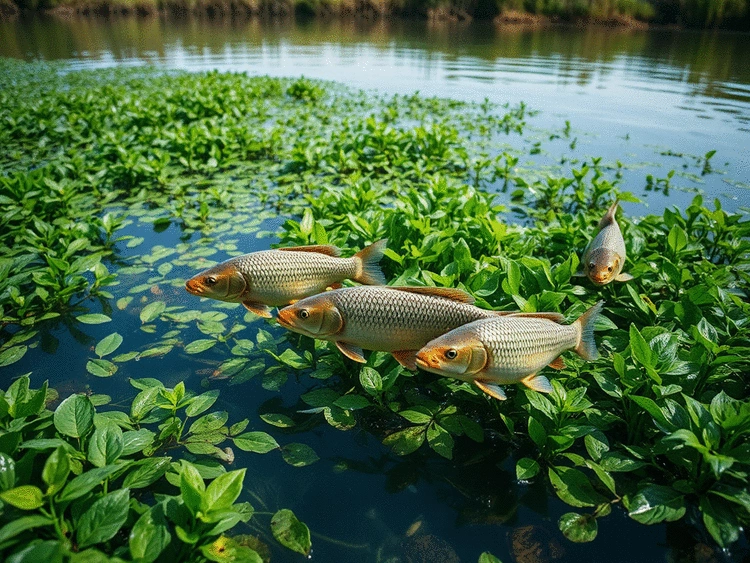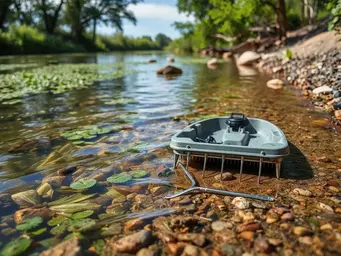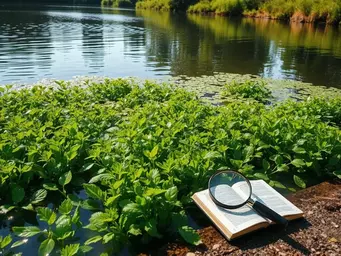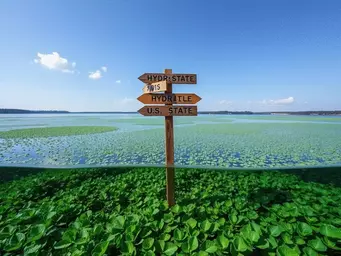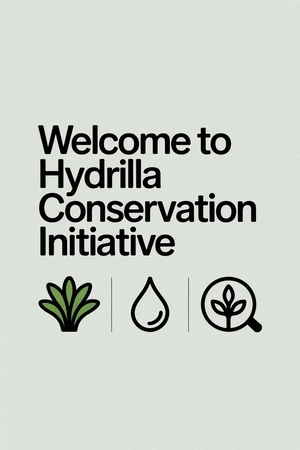Did you know that hydrilla can double in size in just one week? This rapid growth not only affects fisheries but poses a serious threat to our aquatic ecosystems. Understanding how to manage such an invasive species is crucial for environmental conservation. Let's explore the key insights on biological control methods for hydrilla!
What You Will Learn
- Hydrilla is a fast-growing aquatic plant that can quickly choke waterways and disrupt ecosystems.
- Biological control methods, such as using natural predators, are eco-friendly and can provide long-term solutions to manage hydrilla.
- Implementing biological controls minimizes reliance on harmful chemical herbicides, promoting healthier aquatic environments.
- Engaging local communities and tailoring strategies to specific ecosystems enhances the effectiveness of hydrilla management efforts.
Benefits of Biological Control for Hydrilla Management
Biological control offers a sustainable and effective approach to managing invasive hydrilla. The visual below highlights the key advantages of this eco-friendly method.
Natural Balance & Ecosystem Restoration
Grass carp and other biocontrol agents help restore the natural balance in aquatic ecosystems by controlling hydrilla populations.
Reduced Chemical Dependency
Minimizes the need for harmful herbicides, promoting a healthier environment for non-target species.
Cost-Effective Solution
Provides long-term savings by reducing ongoing management costs associated with chemical treatments.
Improved Water Quality & Recreational Use
Controlling hydrilla enhances overall water quality, benefiting native species and recreational activities like fishing and boating.
Understanding Biological Control Methods for Hydrilla
When we talk about hydrilla, we're diving into a world of complexities that many may overlook. This invasive aquatic plant not only thrives in freshwater systems but can also disrupt entire ecosystems. Have you ever witnessed a once-clear lake turn into a tangled mass of green? It’s a sight that can be both beautiful and alarming! Understanding the biology behind hydrilla is essential for effective management.
As an aquatic biologist, I’ve dedicated years to studying this plant's rapid growth and profound impact on native species. The main concern is that hydrilla can outcompete indigenous plants, leading to a decline in biodiversity. This challenge calls for innovative solutions. One of the most promising methods we can explore is biological control, a natural way to tackle the issue. Let’s take a closer look!
What is Hydrilla and Why is it a Concern?
Hydrilla (*Hydrilla verticillata*) is an aquatic plant characterized by its dense growth and ability to spread rapidly. It’s often referred to as a "super weed" because of its resilience and adaptability in various water conditions. Why is it a concern? Here are some key points to consider:
- Rapid Growth: Hydrilla can double in size within a week under optimal conditions, choking waterways. According to the New York Invasive Species Research Institute, this rapid growth rate makes it a significant hazard.
- Competition: It competes aggressively with native plants, reducing their populations and disrupting local ecosystems.
- Water Quality: Dense hydrilla mats can alter water quality by depleting oxygen levels and blocking sunlight.
As a result, hydrilla poses a significant threat to aquatic ecosystems and can even impact recreational activities, such as fishing and boating. Therefore, addressing its spread is essential for preserving our precious waterways.
The Role of Biological Control in Aquatic Weed Management
Biological control involves using natural predators or agents to manage invasive species like hydrilla. This method is advantageous because it minimizes the need for chemical herbicides, which can have unintended consequences on the environment. Here’s why biological control can be a game-changer:
- Eco-Friendly: It reduces chemical inputs, promoting a healthier ecosystem.
- Long-Term Solutions: Biological agents can potentially provide sustained control over hydrilla populations.
- Cost-Effective: Once established, these natural agents can continue to manage hydrilla without ongoing costs. Researchers are actively working on ways to control this "perfect weed" using biological methods in various river systems.
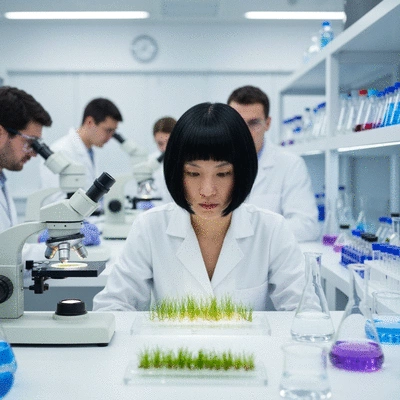
As someone passionate about environmental conservation, I believe that biological control methods can empower communities to take back their waterways. By harnessing nature’s own resources, we can work towards effective management of hydrilla.
Hydrilla as an Invasive Plant Species and Its Impact on Ecosystems
Understanding hydrilla as an invasive species requires recognizing its ecological impact. Invasive plants like hydrilla can alter the balance of aquatic ecosystems, leading to numerous challenges. Here are some notable impacts:
- Biodiversity Loss: Hydrilla can displace native flora and fauna, reducing ecological diversity.
- Habitat Alteration: It can change habitat structures used by fish and other wildlife.
- Economic Impact: The presence of hydrilla can affect local fisheries and water-based recreational activities, leading to economic losses.
As we strive to manage hydrilla effectively, understanding its role as an invasive species is crucial. By raising awareness and employing biological control methods, we can work together to restore balance to our cherished waterways.
Pro Tip
Did you know? Integrating biological control methods with community engagement can significantly enhance the effectiveness of hydrilla management. Involving local stakeholders not only fosters a sense of ownership but also helps in monitoring and adapting strategies for better outcomes. Consider organizing community workshops to educate and empower others in your area!
Frequently Asked Questions about Hydrilla Management
What is hydrilla and why is it considered an invasive species?
Hydrilla (*Hydrilla verticillata*) is a fast-growing aquatic plant that can rapidly spread and choke waterways. It's considered invasive because it outcompetes native vegetation, reduces biodiversity, alters water quality by depleting oxygen, and negatively impacts recreational activities and local fisheries.
What are the main benefits of using biological control for hydrilla?
Biological control offers several benefits, including restoring natural ecosystem balance, reducing reliance on harmful chemical herbicides, providing a cost-effective long-term solution, and improving overall water quality for native species and recreational use.
How do biological control agents like grass carp help manage hydrilla?
Biological control agents, such as grass carp, consume hydrilla, thereby helping to control its population. This natural predation helps maintain a balance in the aquatic ecosystem without introducing synthetic chemicals.
What are the ecological impacts of hydrilla?
Hydrilla's ecological impacts include significant biodiversity loss due to displacement of native plants and animals, alteration of habitat structures, and economic losses for fisheries and water-based recreational activities.
What are the future directions in research for hydrilla management?
Future research focuses on understanding the long-term ecological effects of grass carp, developing more targeted biocontrol strategies, examining genetic variations in grass carp for improved effectiveness, and enhancing public awareness and education about invasive species management. Further advancements in aquatic plant management, including hydrilla control, are often discussed at conferences such as the Aquatic Plant Management Society Annual Meeting.
Summarizing the Benefits of Biological Control for Hydrilla
When it comes to managing hydrilla, biological control methods offer a sustainable and effective approach. By utilizing natural predators like grass carp, we can keep hydrilla populations in check while minimizing the ecological footprint of our interventions. It's crucial to recognize that successful aquatic weed management requires a multi-faceted strategy, and biological control stands out as a promising solution!
To recap, here are some key benefits of using biological control for hydrilla:
- Natural balance: Grass carp and other biocontrol agents help restore balance in aquatic ecosystems.
- Reduced chemical dependency: Utilizing biological methods minimizes the need for herbicides, which can harm non-target species.
- Cost-effective solution: Over time, biological control can reduce management costs compared to chemical treatments.
- Improved water quality: By controlling hydrilla, we enhance the overall water quality, benefiting native species and recreational use.
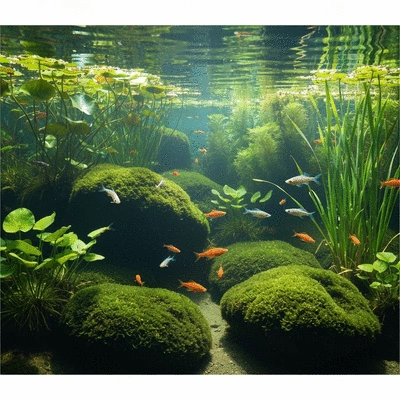
Implementing biological control can lead to healthier ecosystems, which aligns perfectly with our mission at the Hydrilla Conservation Initiative. We believe in empowering professionals and educators to take action against invasive species like hydrilla!
Key Takeaways for Effective Aquatic Weed Management
As we explore the landscape of aquatic weed management, several critical takeaways emerge. Understanding the intricacies of hydrilla and its impacts on our waterways is essential. One of the most effective strategies is to combine biological controls with other methods for a more comprehensive approach.
- Consider local ecosystems: Tailor your management strategies to fit the specific needs of your area.
- Collaborate with other stakeholders: Engaging local communities and environmental organizations can enhance your efforts.
- Stay informed on regulations: Understanding local permitting processes is vital for successful implementation.
- Monitor outcomes: Regularly assess the effectiveness of your control methods to adapt as needed.
These takeaways can help guide your actions and ensure that the management of hydrilla is both effective and environmentally responsible.
Next Steps: Evaluating Your Options for Hydrilla Control
So, what’s next in the journey of managing hydrilla? Evaluating your options involves assessing both biological and conventional methods suitable for your specific situation. At the Hydrilla Conservation Initiative, we encourage you to consider a holistic approach that incorporates biological controls like grass carp alongside mechanical and chemical methods.
As you explore your options, think about the following steps:
- Conduct a site assessment to identify hydrilla density and ecosystem health.
- Consult with local experts or our resources to determine the most effective biocontrol agents.
- Plan a management strategy that incorporates various control methods.
- Engage with community members to foster support for your initiatives.
Taking these steps can position you for success in managing hydrilla while promoting a healthy ecosystem!
Future Directions in Grass Carp Research and Aquatic Plant Management
Looking ahead, research on grass carp and other biological control methods continues to evolve. Ongoing studies aim to uncover new insights into the effectiveness, ecological impacts, and best practices for using grass carp in hydrilla management. As an aquatic biologist and founder of the Hydrilla Conservation Initiative, I’m excited about the potential advancements in this field!
Some future research directions include:
- Investigating the long-term ecological effects of grass carp on native plant communities.
- Developing more targeted biocontrol strategies that consider regional biodiversity.
- Examining the genetic variations among grass carp populations for improved effectiveness.
- Enhancing public awareness and education programs about invasive species management.
By staying informed and adaptable, we can enhance our management practices and contribute to the recovery of our vital waterways! 🌊
Recap of Key Points
Here is a quick recap of the important points discussed in the article:
- Understanding Hydrilla: Hydrilla is a rapid-growing invasive aquatic plant that disrupts ecosystems by outcompeting native species.
- Biological Control Benefits: Utilizing natural predators like grass carp offers eco-friendly, long-term solutions to manage hydrilla populations.
- Impact on Ecosystems: Hydrilla leads to biodiversity loss, habitat alteration, and economic impacts on local fisheries and recreational activities.
- Integrated Management Strategies: Combining biological control with other methods is essential for effective aquatic weed management.
- Future Research Directions: Ongoing studies focus on the ecological effects of grass carp and developing targeted biocontrol strategies.
